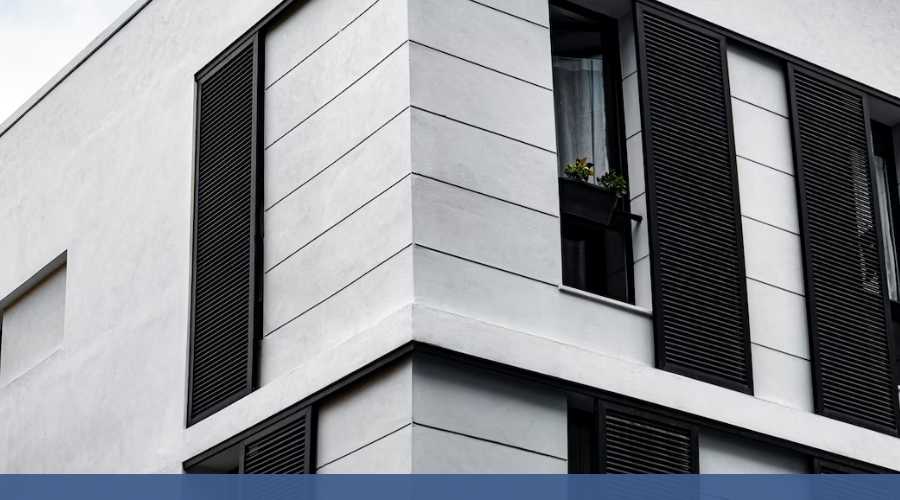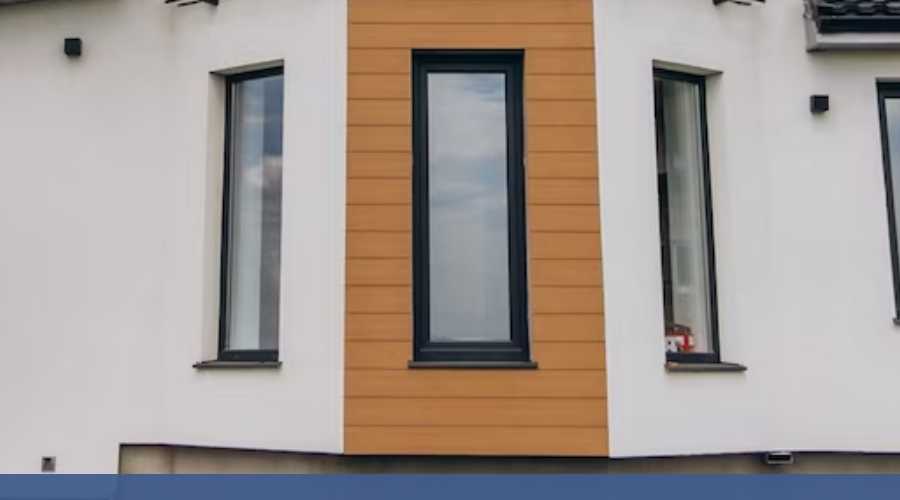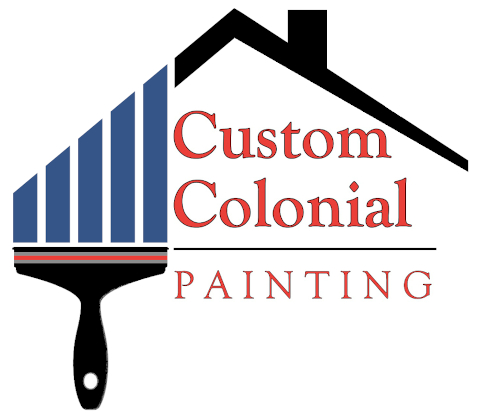
Painting plays a crucial role in giving your home’s exterior a fresh and vibrant look. However, a successful exterior house painting project requires more than just a brush and a can of paint. To ensure outstanding results and a long-lasting finish, it’s essential to follow expert advice from the best house painters in Durham, CT. By incorporating these professional tips into your painting project, you’ll achieve a stunning transformation that will enhance your home’s curb appeal and protect it for years to come.
1. Inspect and Prepare the Surface Thoroughly
Before starting any exterior painting project, take the time to inspect the surface of your home thoroughly. Look for cracks, peeling paint, mildew, or any other imperfections. Addressing these issues before painting ensures a smooth and flawless finish.
Surface Preparation Tips
1. Thoroughly Inspect the Surface
Inspecting the surface is the first step in preparing for an exterior house painting project. Take the time to carefully examine the walls, siding, trim, and any other areas that will be painted. Look for any signs of damage, such as cracks, peeling paint, or areas of decay. Identify areas with mildew or mold growth that will need special attention. By identifying these issues upfront, you can address them before painting and ensure a smooth and long-lasting finish.
2. Clean the Surface to Remove Dirt and Debris
After inspecting the surface, it’s important to clean it thoroughly to remove dirt, dust, and debris. Use a pressure washer or a hose with a high-pressure nozzle to effectively remove surface contaminants. If there are stubborn stains or mildew areas, consider using a mild detergent or a specialized cleaner designed for exterior surfaces. Scrub the surface gently with a soft brush or sponge to loosen dirt and grime, then rinse thoroughly to ensure a clean surface for paint adhesion.
3. Remove Loose or Peeling Paint
Next, it’s crucial to remove any loose or peeling paint from the surface. Professional house painters in Durham, CT, recommend using a scraper or a wire brush to scrape away flaking paint until you reach a stable and sound surface. Pay attention to areas where the paint is blistering or bubbling, as these indicate underlying issues that must be addressed. Removing loose paint ensures that the new coat of paint adheres properly and prevents further peeling or flaking in the future.
4. Repair Any Damages, Cracks, or Holes
To ensure a seamless and flawless exterior house painting project, professional house painters believe it is crucial to repair any damages, cracks, or holes on the surface. Begin by assessing the extent of the damage and identifying the appropriate repair method. You can use a high-quality exterior-grade patching compound or filler for smaller cracks and holes. Carefully apply the filler to the damaged area, ensuring it fills the space. Use a putty knife to smooth the surface and create a level finish. Allow the filler to dry according to the manufacturer’s instructions. Once dry, gently sand the patched areas to create a uniform surface.
However, for larger damages or structural issues, it is advisable to consult professional house painters in Durham, CT, or local contractors who have the expertise to handle complex repairs.
5. Sand the Surface for a Smooth Finish
Achieving a smooth, professional-looking finish for your exterior house painting project requires thorough surface sanding. Using medium-grit sandpaper or a sanding block, gently sand the entire surface, paying close attention to areas where you have patched, repaired, or removed loose paint. Employ a circular or back-and-forth motion while applying light pressure to avoid damaging the surface. The objective is to create a slightly roughened surface that promotes better paint adhesion. After sanding, it is crucial to remove all dust and debris. Use a clean cloth or a tack cloth to wipe away the sanding residue thoroughly.
2. Choose High-Quality Paint and Materials
Investing in high-quality paint and materials is a wise decision that will significantly impact the outcome of your exterior painting project. Top-quality paint offers better coverage, durability, and resistance to fading and weathering. Consult with experienced house painters in Durham, CT, or visit a reputable paint store to choose the right type and color of paint that suits your home’s exterior and environmental conditions.
Consider These Paint Options
1. Acrylic Latex Paint
Acrylic latex paint is a popular choice for exterior painting due to its durability and versatility. It provides excellent adhesion, breathability, cracking, peeling, and blistering resistance. Acrylic latex paint is also easy to clean and offers good color retention over time. It suits various exterior surfaces, including wood, siding, and stucco.
2. Oil-Based Paint
Oil-based paint, also known as alkyd paint, is known among expert house painters for its exceptional durability and high-gloss finish. It provides excellent protection against weathering, moisture, and UV rays. Oil-based paint is suitable for surfaces that require superior adhesion and resistance, such as metal and previously painted surfaces. However, it does have a strong odor, longer drying time, and requires proper ventilation during application.
3. Water-Based Enamel Paint
Water-based enamel paint combines the durability and high-gloss finish of oil-based paint with the easy cleanup and low odor of latex paint. It offers expert house painters excellent adhesion, durability, and resistance to weathering. Water-based enamel paint is ideal for surfaces that require a smooth, durable, and easy-to-clean finish, such as doors, trims, and shutters.
4. Masonry Paint
Masonry paint is specifically designed for exterior masonry surfaces, such as brick, concrete, and stucco. It provides excellent coverage, durability, and resistance to weathering. Professional house painters use this to allow the surface to breathe while protecting it from moisture and harsh elements. It is available in a range of finishes, including flat, satin, and textured, to suit your desired look.
5. Specialty Paints
Depending on the needs of reliable house painters, various specialty paints are available for exterior applications. For example, elastomeric paint is ideal for surfaces prone to cracking and movement, as it forms a flexible, waterproof membrane. Textured paint can add depth and character to your exterior walls. Additionally, paints formulated for specific surfaces, such as metal or wood, offer enhanced protection and adhesion.
3. Consider the Climate and Season

The climate in Durham, CT, and the current season play a crucial role in the success of your exterior painting project. By considering the climate and season, you’ll ensure optimal paint application and curing conditions.
Tips to Paint in Every Season
1. Spring
Professional house painters believe that spring is generally a favorable season for painting. The mild temperatures and lower humidity provide ideal paint application and drying conditions. However, be mindful of potential rain showers, as wet surfaces can affect paint adhesion. Check the weather forecast and plan your painting days accordingly. Take advantage of the pleasant weather to tackle your exterior painting project.
2. Summer
Painting in summer can present some challenges to experienced house painters due to high temperatures and increased humidity. Choose early mornings or late afternoons to avoid painting during the hottest parts of the day. Direct sunlight can cause the paint to dry too quickly, leading to uneven finishes or lap marks. Provide adequate shade for the painted surfaces, if possible. Keep an eye on the weather, as summer can also bring sudden rain showers. Ensure the surface is dry before applying paint, and consider using quick-drying or low-temperature paints for better results.
3. Fall
Fall is often an excellent time for professional house painters. Moderate temperatures and lower humidity create favorable paint application and drying conditions. Take advantage of the crisp weather to refresh your home’s exterior. Be mindful of falling leaves and debris during the painting process. Regularly clean the surface to prevent them from sticking to wet paint and causing imperfections.
4. Winter
Painting during winter requires special considerations, according to the best house painters. Cold temperatures can impact paint drying and curing, leading to improper adhesion and compromised finish. It is generally recommended to avoid painting when temperatures are near or below freezing. However, if you need to paint during winter, choose milder days with temperatures above freezing. Use paints formulated explicitly for colder temperatures and follow the manufacturer’s instructions regarding minimum application temperatures. Be prepared for longer drying times and consider using heaters or fans to ensure proper ventilation and facilitate drying.
4. Don’t Skip the Primer
According to the best house painters, priming the surface is a step that should never be skipped, especially when dealing with bare wood, new surfaces, or areas with peeling paint. Primer acts as a protective layer, improving paint adhesion and helping create a uniform finish.
The Different Types of Primer
When choosing the right primer for your exterior painting project, several types are available to suit different surface needs. Here are some common types of primers used by professional house painters:
1. Oil-Based Primer
Oil-based primers are known among expert house painters for their excellent adhesion and stain-blocking properties. They are ideal for surfaces with stains, tannins, or previous coatings that may bleed through the paint. Oil-based primers are effective on wood, metal, and previously painted surfaces, providing a smooth and durable base for the topcoat. However, they have a strong odor, longer drying time, and require proper ventilation during application.
2. Latex Primer:
Latex primers, also known as water-based primers, are popular due to their easy cleanup, low odor, and fast drying time. They suit various surfaces, including wood, drywall, and masonry. Latex primers offer good adhesion, stain blocking, and compatibility with latex and oil-based paints. They are an excellent choice for general-purpose priming needs.
3. Shellac-Based Primer
Shellac-based primers are versatile and known for their excellent stain-blocking capabilities. They are particularly effective for blocking water-based stains, smoke damage, and odors. Shellac primers are often used on wood, plaster, metal, and even old wallpaper. They dry quickly, provide good adhesion, and can be top-coated with various types of paint.
4. Bonding Primer
Expert house painters use bonding primers to improve adhesion on challenging surfaces such as glossy or slick surfaces, PVC, tile, or glass. They create a strong bond between the surface and the topcoat, ensuring better paint adhesion and durability. Bonding primers are often recommended for difficult-to-paint surfaces or when transitioning between different types of materials.
5. Tinted Primer
Tinted primers are regular primers that are tinted to a specific color. They are useful to experienced house painters when painting a surface with a significant color change, as the tinted primer can provide better coverage and help the topcoat achieve its desired color more efficiently. Tinted primers are commonly used when transitioning from a dark color to a lighter one or when covering stains or deep colors.
5. Apply Paint Properly

To achieve a professional-looking finish, it’s important to apply the paint correctly. Following the proper application techniques of the finest house painters will result in a smooth and flawless finish.
Applying Paint Like a Professional
1. Cut in around Edges and Trim
According to professional house painters, cutting in refers to precisely painting the edges, corners, and trim before using a roller on larger surfaces. Creating clean lines and achieving a professional finish is an important step. Use a high-quality angled brush and load it with paint. Start by carefully applying paint along the edges and trim, maintaining a steady hand and smooth strokes. Take your time to ensure crisp lines and blend the painted areas seamlessly with the rest of the surface. Cutting in allows for greater control and ensures a neat and polished appearance.
2. The Right Painting Technique
Using the right painting technique of the finest house painters is key to achieving an even and consistent finish. A roller is commonly used when painting larger surfaces like walls or siding. Start at the top and work your way down, using vertical or horizontal strokes. Apply the paint smoothly and evenly, avoiding excessive pressure that could lead to drips or uneven coverage. Overlap each stroke slightly to ensure a uniform appearance. By using the right painting technique, you’ll achieve a professional-looking finish that enhances the overall aesthetics of your home.
3. Maintain a Wet Edge
According to reliable house painters, maintaining a wet edge is crucial to prevent visible lines or unevenness in the paint. It ensures that each paint stroke blends seamlessly into the previous one while the paint is still wet. To achieve this, work in smaller sections and avoid letting painted areas dry completely before moving on to the adjacent sections. Keeping a wet edge creates a smooth transition between strokes and achieves a consistent finish without any noticeable breaks or differences in color or texture.
4. Apply Multiple Thin Coats
It is best to apply multiple thin coats rather than applying a thick layer of paint in one go. According to reliable house painters, thin coats dry more evenly, reducing the risk of drips, sags, or uneven coverage. Allow each coat to dry completely before applying the next one, following the paint manufacturer’s instructions for recommended drying times. Applying multiple thin coats builds up a solid and uniform layer of paint, resulting in a smoother and more durable finish.
5. Blend Touch-up Areas
When touch-ups or additional coats are needed, blending them seamlessly with the rest of the painted surface is important. Feather the paint strokes at the edges of touch-up areas to create a smooth transition and avoid visible lines or unevenness. You maintain a cohesive and professional-looking finish throughout the painted surface by blending touch-up areas effectively.
Transform Your Home Into a Beautiful Piece of Art With the Best House Painters in Durham, CT
With years of experience and a passion for craftsmanship, our team of skilled house painters at Custom Colonial Painting is committed to delivering top-quality results that exceed your expectations. Whether you want to revitalize your home’s exterior or update your interior with a new color scheme, we’ve got you covered. Contact Custom Colonial Painting today for a free consultation, and let us bring your vision to life. Experience the difference of professional painting expertise!


